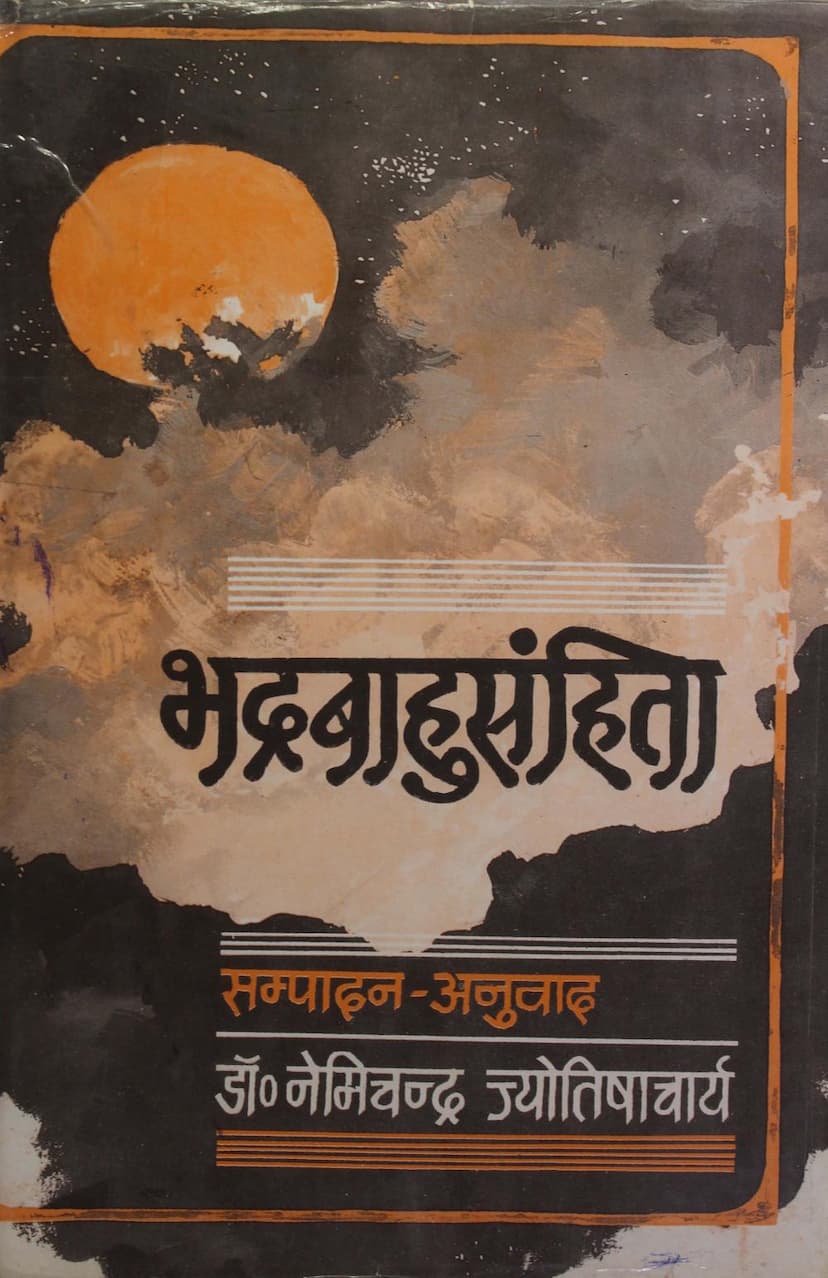Bhadrabahu Samhita
Added to library: September 1, 2025

Summary
The Bhadrabahu Samhita, compiled and translated by Dr. Nemichandra Jyotishacharya, is a significant ancient Indian text on predictive astrology, specifically focusing on the branch of Nimitta Shastra (the science of omens). The publisher is Bharatiya Gyanpith.
The text posits that before any significant event occurs, nature exhibits certain subtle changes or disturbances. By accurately identifying and interpreting these natural phenomena, individuals can gain insights into future auspicious or inauspicious events.
The Bhadrabahu Samhita elaborates on various nimitta (omens) and their indications for individuals, society, governance, and even the nation. These include:
- Celestial Phenomena: Meteor showers (Ulkapāt), halos around celestial bodies (Pariveṣa), lightning (Vidyut), clouds (Abhra), twilight conditions (Sandhyā), cloud formations and their characteristics (Megha), winds (Vāta), rainfall (Pravarṣaṇa), phantom cities in the sky (Gandharvanagara), and other atmospheric disturbances (Utpāta).
- Planetary Movements: The movements of planets (Grahachāra), planetary conjunctions, and celestial battles (Grahayuddha).
- Dreams: Interpretations of dreams (Swapna) as predictive signs.
- Time-Based Factors: Auspicious timings (Muhūrta), lunar days (Tithi), and lunar Tithi divisions (Karaṇa).
- General Omens: Omens related to specific actions or observations (Śakuna).
- Other Phenomena: It also touches upon fire phenomena (Pāka), astrology (Jyotisha), architecture (Vāstu), and auspicious times for various activities.
The book aims to provide knowledge that allows individuals to be forewarned about impending events, enabling them to navigate their worldly lives successfully by acting in accordance with these signs. The text establishes a causal relationship between celestial and natural phenomena and future events, though it clarifies that these natural causes are informants rather than direct executors of fortune or misfortune; they merely indicate what is to come.
Historical Context and Authorship:
The Bhadrabahu Samhita is not considered a direct work of the famous Digambara Jain Acharya Shrutakevali Bhadrabahu, who is renowned for his knowledge of the twelve Angas of Jain scripture and his migration to South India during a famine. Instead, scholars believe it was composed or compiled by a scholar named Bhadrabahu in the 11th-12th century CE, based on the traditional subjects discussed in Nimitta Shastra literature. Some scholars even suggest it might be a collection of disparate chapters from the post-medieval period.
Content and Structure:
The first edition of this work, edited and translated by Dr. Nemichandra Shastri (Jyotishacharya), was published by Bharatiya Jnanpith in 1959. This new edition is presented with a detailed introduction, offering significant insights into the subject matter and the history of the text's composition. The text reportedly contains approximately 27 chapters, with chapter 30 included as an appendix. The chapters meticulously detail various phenomena and their predictive interpretations, covering a broad spectrum of natural signs and their impact on human life and societal events, such as rainfall patterns, prosperity, adversity, gain, loss, victory, and defeat.
Comparison with Brihat Samhita:
The text shares thematic similarities with Varahamihira's Brihat Samhita, particularly in its chapters on meteor events and halos. While the Bhadrabahu Samhita offers more extensive explanations and sometimes differing interpretations of omens compared to the Brihat Samhita, it is noted for its detailed descriptions of dream interpretations and travel omens, which are considered particularly valuable. The manuscript tradition of the Bhadrabahu Samhita indicates that its compilation likely occurred over time, with later additions and modifications. The editors acknowledge the presence of certain inaccuracies in the original Sanskrit text, which have been partially addressed in the Hindi translation while striving to maintain the work's originality.